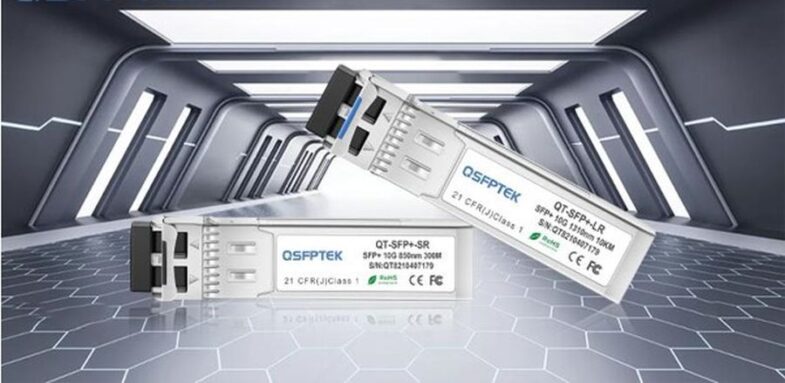10GBASE-SR is a standard for optical fiber that provides 10 gigabits per second of data transfer. It is an extension of the 10GBASE-R standard.
10G and 10GBASE-SR are two technologies that provide high bandwidth for data transmission in the form of light over optical fiber. The advantages of 10GBASE-SR are that it provides greater distances than 10G, and it has lower power consumption than previous generations of technology.
10GBASE-SR is a fiber optic standard that is used in data centers and networks. It provides a 10 gigabit per second data rate over a distance of up to 100 meters, which is significantly more than 10Gbase-T.
The benefits of using 10GBASE-SR are that it can be used in any environment where copper cabling has been used before, it has very high performance, and it can be installed easily.
The 10GBASE-SR(click here to know more) standard is an optical fiber technology developed by the IEEE. It has a range of 100 meters and provides data rates up to 10 gigabits per second.
The benefits of 10G are that it can handle more data in a shorter period of time, which means faster transmission and less congestion. The disadvantages of 10G are that it requires expensive hardware and the use of SFP+ modules.
10GBASE-SR and 10G optical module Protocols Explained

Source: openpr.com
Optical modules are the hardware devices that connect to the network and convert an optical signal into electrical signals. They are used in fiber-optic networks to transmit data from one computer to another.
SFP+ is a type of optical module that can be plugged into a 10GBASE-SR transceiver. It is used for short-reach applications and transmits data at 10 gigabits per second (Gb/s).
10GBASE-SR is a communication protocol that operates on single-mode fiber optic cables. It sends data at 10 gigabits per second (Gb/s) over distances of up to 3 kilometers.
SFP+ is a hot-pluggable transceiver that plugs into a Gigabit Ethernet port or slot in the host system. It is a small form factor pluggable (SFP) module, which is an optical transceiver that converts electrical signals to optical signals and vice versa.
SFP+ modules are typically used in data center networks and other high-speed networks. They are popular because they are inexpensive, easy to install, and can be used with any type of fiber optic cable.
10GBASE-SR is an abbreviation for 10 gigabits per second over single-mode fiber using short-reach optics. It uses the SFP+ module as well as a 10GBASE-SR-compliant optical module at the other end of the link.
A Buyer’s Guide to the Different Types of 10 GbE Cables That are Available on the Market
In this article, we will take a look at the different types of fiber optic cables and the benefits of each.
The 10 GbE (10 gigabit Ethernet) cables are the latest trend in data transfer and networking. The cables can be either copper or fiber optic.
Copper is a popular choice because it is cheaper and easier to install than fiber optics. Copper has a higher bandwidth than fiber optics, but it also has more latency and interference issues. Fiber optic cables come with a higher price tag, but they are more reliable than copper and have lower latency rates.
There are many different types of 10 GbE cables that are available on the market. This guide will help you understand the difference between these cables and how they can be used in different situations.
The first important thing to understand is what 10 GbE is and how it works. 10 Gigabit Ethernet (10GbE) is a standard that defines a network transmission rate of 10 gigabits per second (10,000,000,000 bits per second). It’s also known as “10Gigabit Ethernet” or “10GBaseT”.
There are two main types of fiber optic cables: Single-mode and Multimode. Single-mode fiber optic cable transmits light signals in a single beam along a path through the center of the core of the cable, while multimode transmits light signals in multiple beams along paths through the cladding material surrounding the core.
What Makes a Great Data Center Design?

Source: openpr.com
There are a lot of factors that go into designing a data center. One of the most important considerations is power and cooling. The data center needs to be able to provide enough power for the IT equipment and cool it down so that it doesn’t overheat.
In order to meet these requirements, data centers need a 10GABSE-SR optical module, which provides 10GBASE-SR for data center applications.
The 10GBASE-SR is a cost-effective, high-performance solution for 10G Ethernet.
The 10GBASE-SR is an optical module that provides a cost-effective, high-performance solution for 10G Ethernet. It supports both multimode and single-mode fiber. The 10GBASE-SR can be used with any standard SFP+ transceiver and operates at 850nm wavelength to support distances of up to 300m over multimode fiber and 550m over single-mode fiber.
It’s also backward compatible with lower speed rates such as 1Gbps, 2.5Gbps, 5Gbps, and 10Gbps.
Conclusion
This article has been a guide to 10GBASE-SR the future of optical networking. We have seen that it is an important module that can be used in various applications. It is an optical module with high data transmission rates and low power consumption, which makes it a good option for data centers and other places where power is limited. The development of optical modules has been one of the most exciting and interesting developments in the world of networking. This article has discussed how 10GBASE-SR, which is due to be adopted by data centers in the near future, will ensure that we can continue to enjoy an ever-growing internet and all its benefits.
